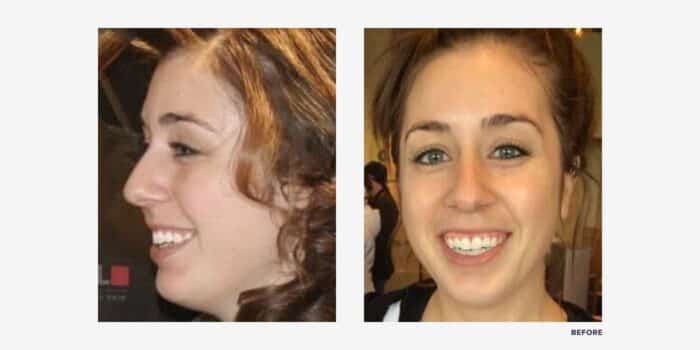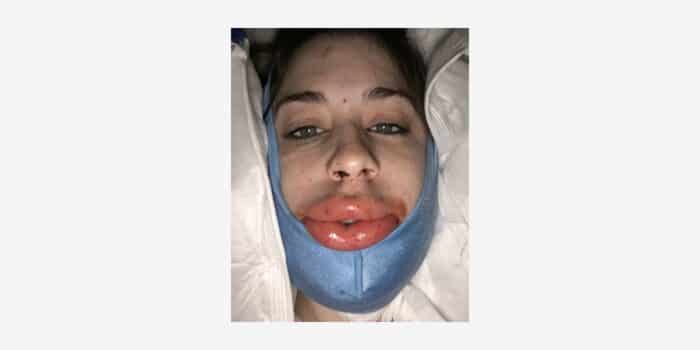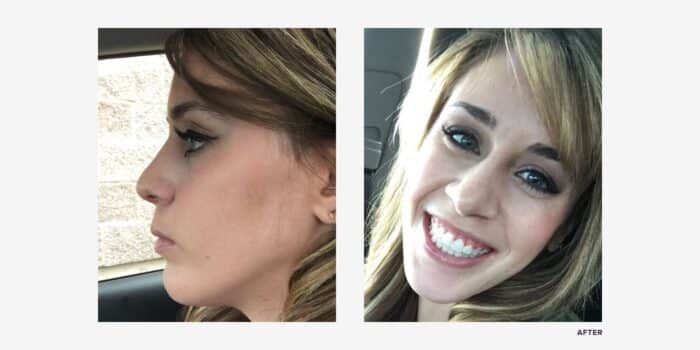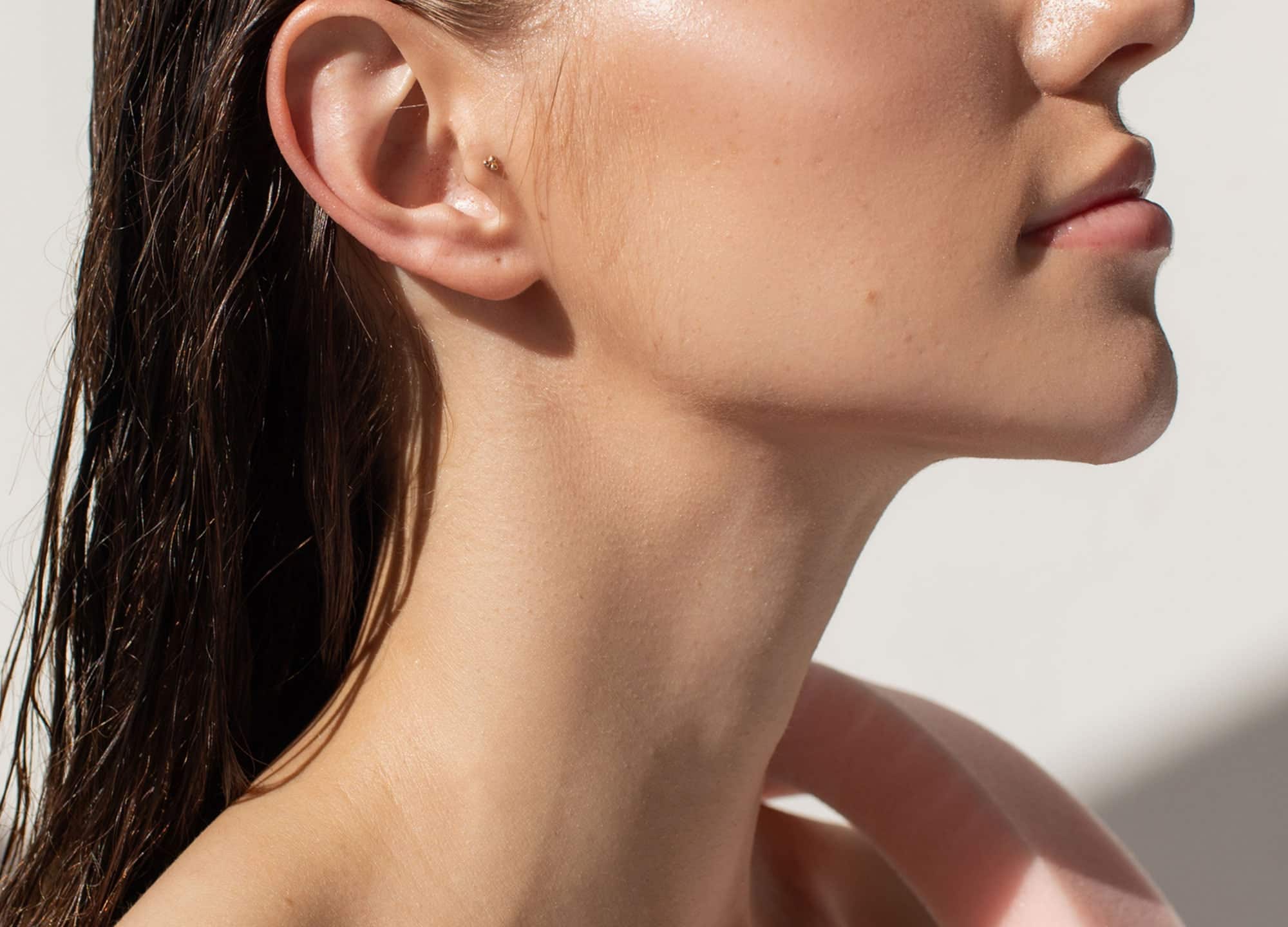I’ve been self-conscious of my side profile since childhood. In photos, I always tried to angle myself in such a way that it would distract from my long face, gummy smile, and weak chin. On top of that, I had crooked teeth and an overbite that prevented my lips from closing.
Constantly parted lips led to mouth breathing, dry mouth, jaw pain, difficulty chewing, and an inability to bite into foods. Braces and rubber bands were the recommended treatment—I wore them for seven years, and for a while, I was satisfied with the results they gave me.

Over the years, however, my jaw slowly slipped back into its original position, and my old issues returned. I entered a braces on, braces off cycle for a decade, until a new orthodontist finally recommended jaw surgery. Corrective jaw surgery, or orthognathic surgery, is a surgical procedure that involves moving one (single jaw surgery) or both jaws (double jaw surgery) into a new position, to create better alignment. A misaligned jaw can be due to an accident or injury or, as in my case, congenital.
The surgery would be complicated, but knowing I’d need only one more round of braces was enough for me. Most jaw surgery requires braces before, during, and after the procedure, to ensure proper teeth alignment and help with stability during the healing process. An orthodontist can do only so much to predict bite alignment post-surgery, so tweaks are typically needed afterward. I had braces for six months before and eight months after—slightly less than average, since I had previously spent so much time in braces.
After many conversations with the insurance company and six months of preparation in braces, I was ready for surgery. In order to get the entire surgery—which ended up being $100,000—covered, the closest in-network, board-certified oral and maxillofacial surgeon was located in Seattle—a 1.5-hour flight from my home in Montana. Most insurance companies cover corrective jaw surgery to fix a functional problem, but coverage is unlikely for purely aesthetic reasons.
The day of my double jaw surgery
No amount of research could prepare me for walking into Harborview Medical Center in Seattle that late March morning in 2015. I was 25 years old, and even though I had spent hours reading about double jaw surgery, I panicked and passed out in the bathroom during check-in.
My surgery required just two tiny external incisions on my lower cheeks but several long incisions inside my mouth, along the gums. The 10-hour surgery involved breaking and realigning my upper and lower jaws and expanding my palate before securing everything with titanium screws. Since I already had a small chin, my surgeon decided on a sliding genioplasty, to align my chin with my newly positioned jaw. The chin bone was cut and “slid” into its new position, then secured with screws. Otherwise, she said, I “would go straight from mouth to neck.” This would also help my lips close more comfortably.
I woke up unable to feel my lower face and wearing a “jaw bra,” a band that holds ice packs against your face. My braces were covered with thick, tight bands (a safer yet equally effective alternative to wires) to keep my mouth from opening even a millimeter and ruining my surgical results.

Jaw surgery typically involves a one-night hospital stay, but I spent four days there due to complications. The plane ride home to Montana was excruciating, and I wore a surgical mask to hide my swollen, bruised face from passersby. I knew my mouth would be banded shut for five to eight weeks, depending on healing progress, and my face would be numb. Still, no amount of reading could have prepared me for the actual recovery process.
My double jaw surgery recovery
I woke up from surgery with extremely swollen lips, but I didn’t reach peak swelling until about five days later. I was swollen from my eyes down to my shoulders, with bruising dispersed throughout.
I was exhausted, weak, drooling, and in constant pain for the first two weeks, despite powerful medication every three hours. Since my jaw was banded shut, all meals had to be consumed via syringe. I lived on Ensure (the coffee flavor was a lifesaver) and thinned-out smoothies. Medications had to be crushed, mixed with a liquid, and taken by syringe as well. Teeth brushing was impossible, but medicated mouthwash and a Waterpik eased the experience.
I returned to work four weeks after double jaw surgery, but I wish I had taken more time. My jaw was still banded shut, I was in pain, and no one could understand what I was saying. I was nowhere near ready to be in the office.
After a grueling eight weeks, my bands were finally removed and I was authorized to start soft, no-chew foods. I felt like I was learning to eat solids for the first time—food had never tasted so amazing. At this point, I also had to start jaw stretches. Stretching helps ensure you regain jaw mobility, but it was the most painful part of recovery by far.
Because jaw surgery stretches the nerves in your face, post-surgery numbness is expected. Most of the numbness typically resolves, but I still have tingling in my lower lip and chin almost six years later. I also never regained full mobility and likely won’t at this point.

Despite the numbness and lessened mobility, I couldn’t be happier with the results. My open-mouth breathing and jaw pain days are behind me, and the improvement to my side profile was positive as well. To this day, I still eat pizza with a fork and knife, but knowing that I don’t have to anymore is truly liberating.











